Last updated: July 1, 2025
Article
Reading the Rivers: Water Quality Monitoring in the Pacific Northwest
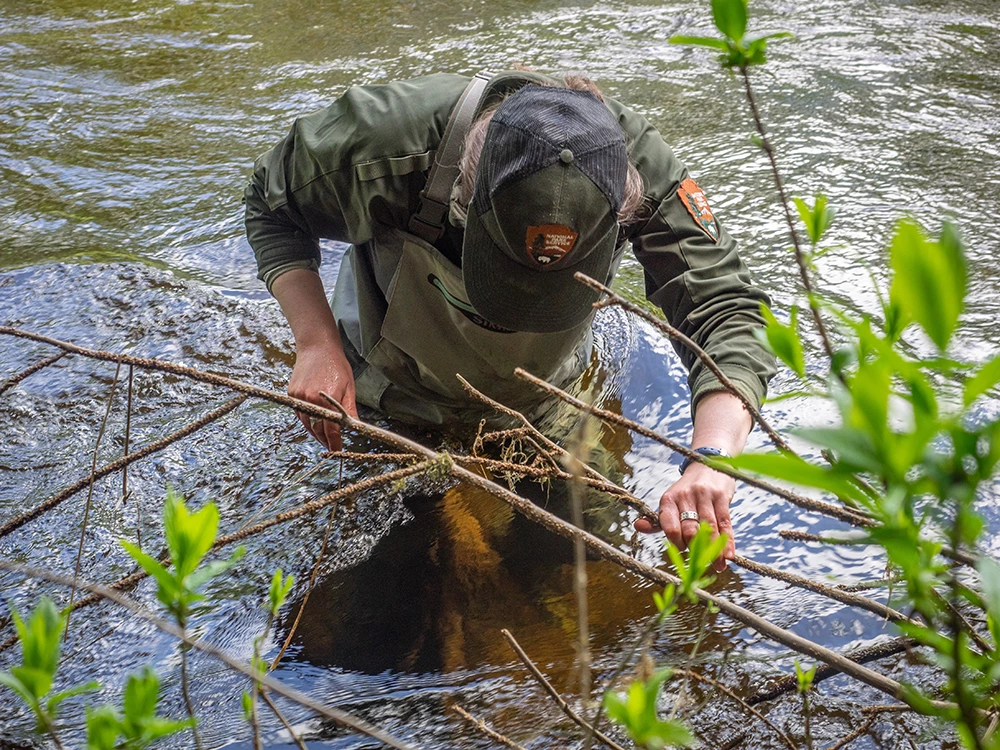
NPS / Hazel Galloway
Crashing through thick undergrowth of bracken, salal, and lady fern, Aquatic Ecologist Katie Ewen emerges onto the steep bank of the Ozette River in Olympic National Park just two and a half miles upstream from where it meets the Pacific Ocean. Wading in and carefully scanning the shallows, her eyes seek out a needle in an underwater haystack: the soda-can-sized, PVC pipe housing for a small instrument that has been quietly logging the water temperature every hour for years.
Beyond a simple number, the water quality record provides important clues that reveal the health of rivers and streams. Over time, this record makes up an important part of the ecosystem’s story, flagging slow changes that could signal emerging problems.
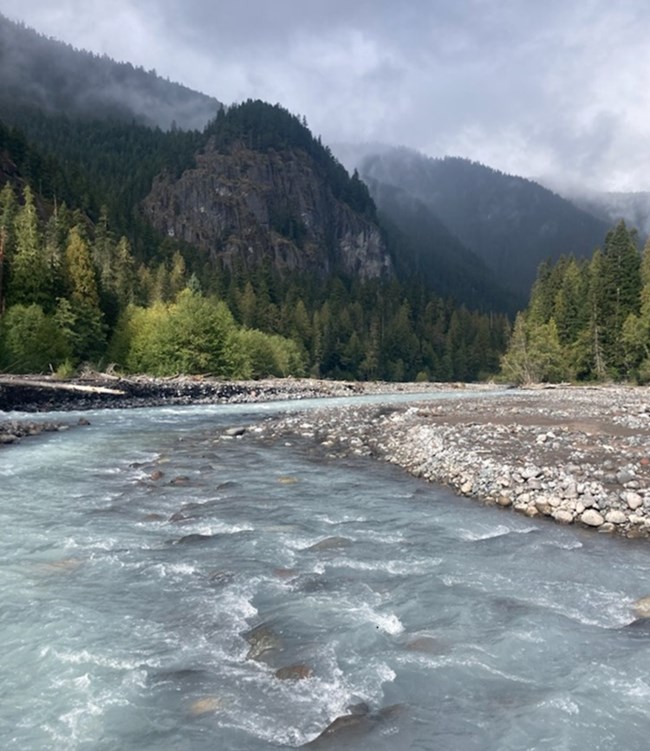
NPS / Katie Ewen
Beneath the Surface
Water quality is one of the key “ecological vital signs” monitored across the North Coast & Cascades Network. Many of the 26 stream and river monitoring sites across five western Washington parks are thought to be under environmental stress, and before this program, there was little information to describe even basic measures of their health.
Katie, who is based at North Cascades National Park but leads water quality monitoring throughout the network of parks, has good reason to care about the answers. In recent years, she has studied dwindling cold-water critical spawning habitat for federally threatened bull trout in Mount Rainier’s rivers. “Continuous data is really important because it can tell us something about the day-to-day status of a site,” she said, “but can also reveal the big picture of changes that take years or decades."
Waterways such as rivers and streams are dynamic systems shaped by continuous movement, with constant changes in flow, temperature, and nutrients. By focusing on a number of different characteristics of a waterway, scientists are able to spot problems early such as rising temperatures, dropping water levels, salinization, or the spread of invasive species.
Streams Under Stress
While the water that flows around the rubberized legs of Katie’s waders looks clear, this site has been listed as impaired under the federal Clean Water Act. The State of Washington flagged increases in summer water temperature and biologically stressful dissolved oxygen and pH levels. It’s also just a few hundred yards downstream from the outflow of Lake Ozette. Historic logging upstream has pushed silt into the lake, filling in gravel beds used for spawning by threatened Lake Ozette sockeye salmon.
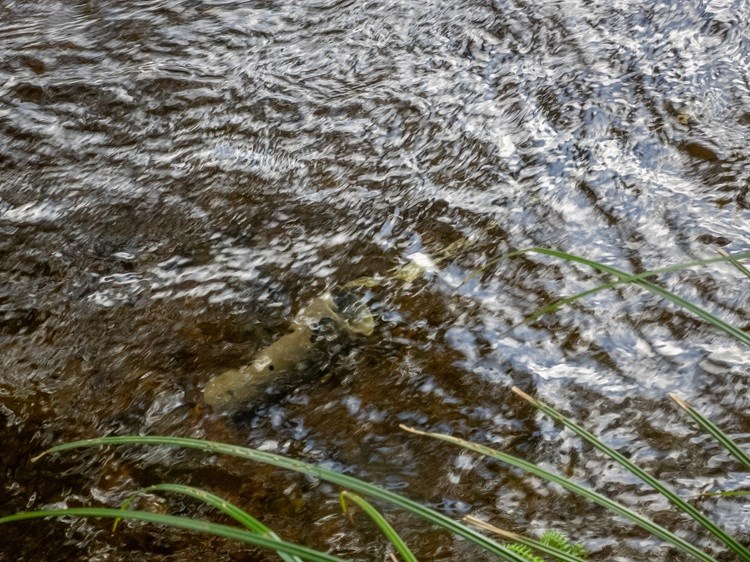
NPS / Hazel Galloway
Beyond the water itself, changes in the river structure can pose a threat to aquatic life. The intentional removal of woody debris from the Ozette River, which took place until 1985, simplified the habitat and eliminated many large pools and logjams—important habitats for fish found in rivers of this size. The river has been found featuring low scores for “pool variability” and “sinuosity”— how much a river bends and curves along its length.
A new NPS report synthesizing data from across the North Coast & Cascades Network’s water quality monitoring sites offers a new perspective on this river. In 2013, field staff installed continuous water and air temperature loggers to capture daily fluctuations and peak temperatures and add yet another dimension to this growing story of river health. These records are critical because temperature is a major driver of river and stream processes, influencing biologically important water chemistry conditions and the timing of fish spawning.
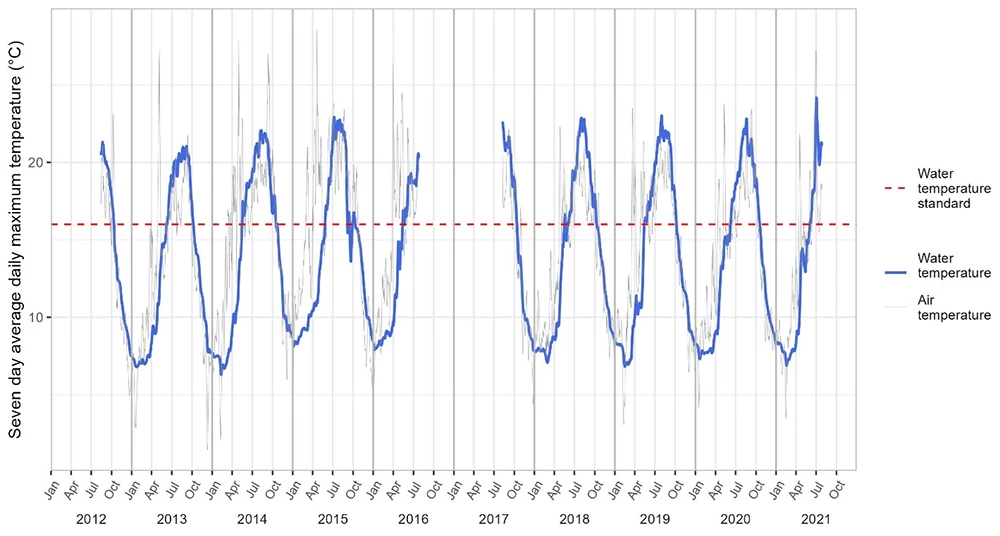
Figure from Water Quality Monitoring in the North Coast and Cascades Network: 2011– 2021 Data Summary (click to view).
A red dashed line marks the water temperature standard at around 16°C.
Living Rivers
The Pacific Northwest is infamously wet. From snow and glacier-capped mountains to lowland temperate rainforests, the land is shaped by an abundance of water. Glacier runoff and snowmelt from high peaks feeds rivers with cold water that sustains downstream ecosystems during the dry summer and fall months. These aquatic habitats support a rich variety of wildlife, from amphibians and fish to insects—and even an aquatic songbird!
As a drop of rain filters down through seeps and wetlands toward streams and rivers that run to the sea, it carries the physical, chemical, and biological fingerprints of the entire watershed. Because of this, water is especially vulnerable to a range of environmental stressors from pollution and erosion to changes in land use and climate.
Many watersheds in the Pacific Northwest are home to anadromous fish—species that hatch in streams and rivers but spend their adult lives in open ocean before returning to freshwater to spawn. Several, including the Skagit River that flows through North Cascades National Park and the Elwha River in Olympic are home to all five Pacific Northwest salmon species (Chinook, coho, chum, pink and sockeye). Each autumn, tens of thousands of salmon make the long journey upstream, leaping through rapids to return to their spawning beds. Their journey depends on clean water and any declines in water quality—or increases in temperature—threaten their survival.
“This project gives us a lot of information on the habitat health of sensitive species," said Katie. "To conserve them in the future, we need to understand what's going on in the homes they rely on."
Watersheds are more than just natural landscapes, they form lifelines for communities. They provide clean water for drinking and subsistence fishing, as well as opportunities for outdoor recreation like hiking and kayaking. The cultural and historical significance of water has shaped identities and traditions in the Pacific Northwest for time immemorial.
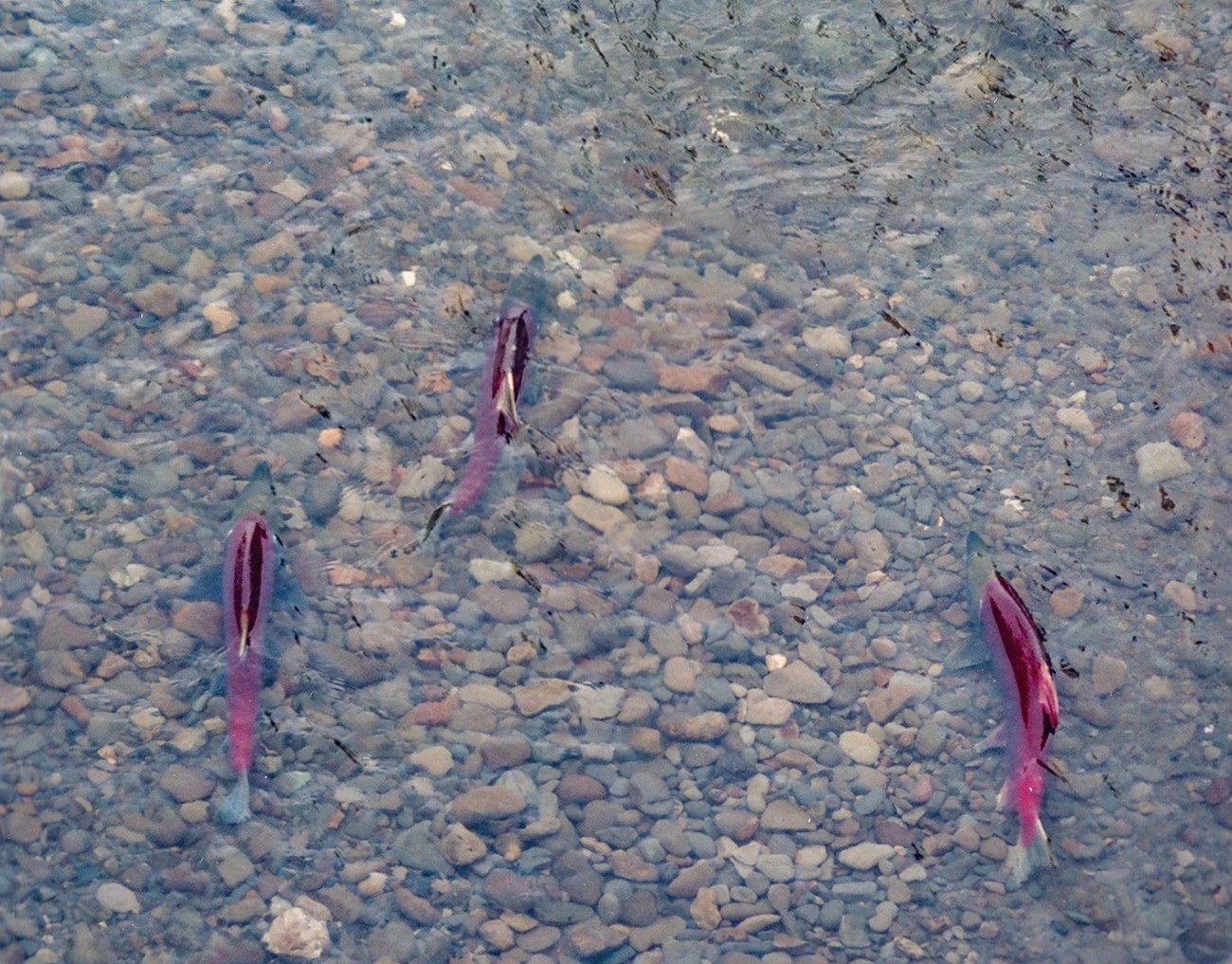
NPS Photo
At Lake Ozette, NPS monitors water quality in partnership with the Makah Tribe. The lake is home to the only remaining sockeye salmon on Makah homelands, a species that holds deep cultural significance for the Tribe. During a monitoring session in 2018, staff discovered Asiatic clams (Corbicula fluminea). Native to freshwater ecosystems across Eastern Asia (including Russia, Thailand, China, and beyond) these invasive shellfish have been introduced across much of the Western Hemisphere, outcompeting native species. While they spread rapidly in Lake Ozette, staff acted quickly to educate the public about the importance of cleaning boats and gear to help mitigate the spread of these clams—as well as other introduced species—to other water bodies.
More encouragingly, the data analyzed in this new report indicates that water quality across the five national parks remains good overall, with data from most sites indicating healthy conditions for a diversity of aquatic life. But this is no reason to stop monitoring. Healthy ecosystems today are not guaranteed to stay that way, and this data serves as a baseline to help detect subtle shifts over time. By maintaining long-term water quality monitoring, parks are able to base management decisions in science.
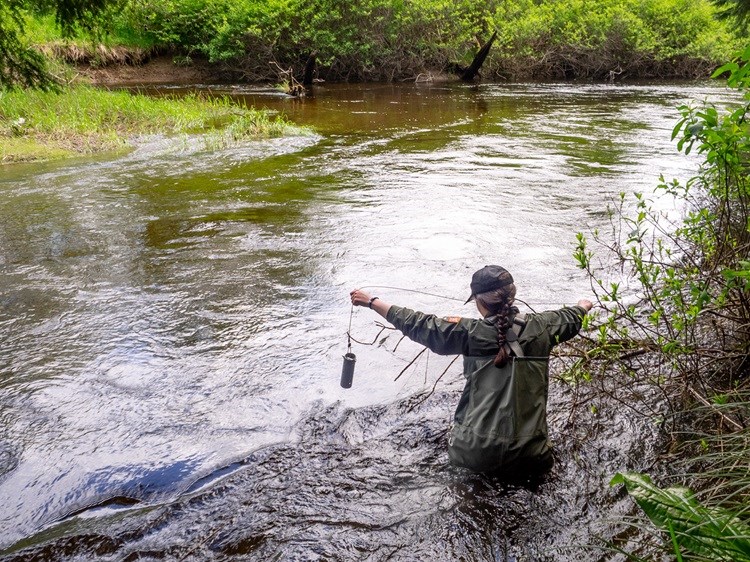
NPS / Hazel Galloway
The Next Chapter
A triumphant shout echoes from the riverbank—Katie has glimpsed the muddy plastic housing for the data logger at the river’s bottom, partly buried beneath a fallen log. As woody debris returns to the channel, the river will continue to shape and reshape itself in important ways. Monitoring allows us to continue reading—and telling—that story.
“It’s important to take stock of what we found,” added Katie, “and decide if there are any new questions that we want to ask and how we can ask those with this ever-growing dataset.” By continually seeking new insights and expanding our understanding, we can better ensure the long-term health and sustainability of rivers and streams. Sharing water quality data provides a vital foundation for tracking trends, identifying potential issues, and protecting the future of these critical ecosystems.
Tags
- ebey's landing national historical reserve
- lewis and clark national historical park
- mount rainier national park
- north cascades national park
- olympic national park
- water quality
- monitoring
- nccn science
- anadromous fish
- salmon
- inventory and monitoring
- mount rainier science
- water resources
- rivers
- streams
- climate change
